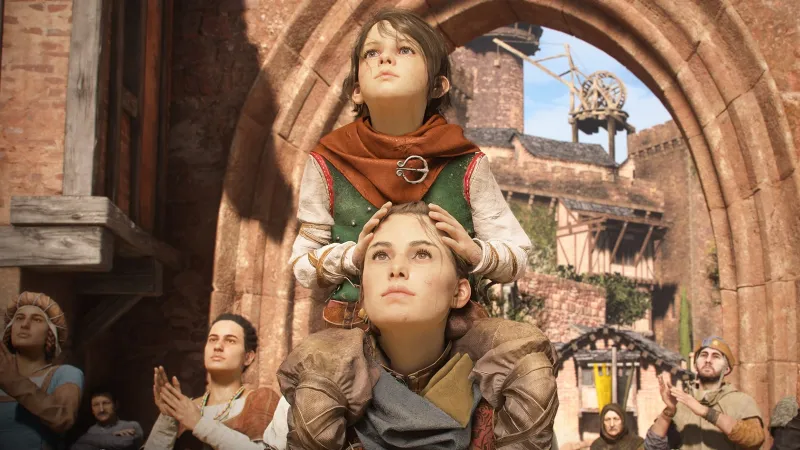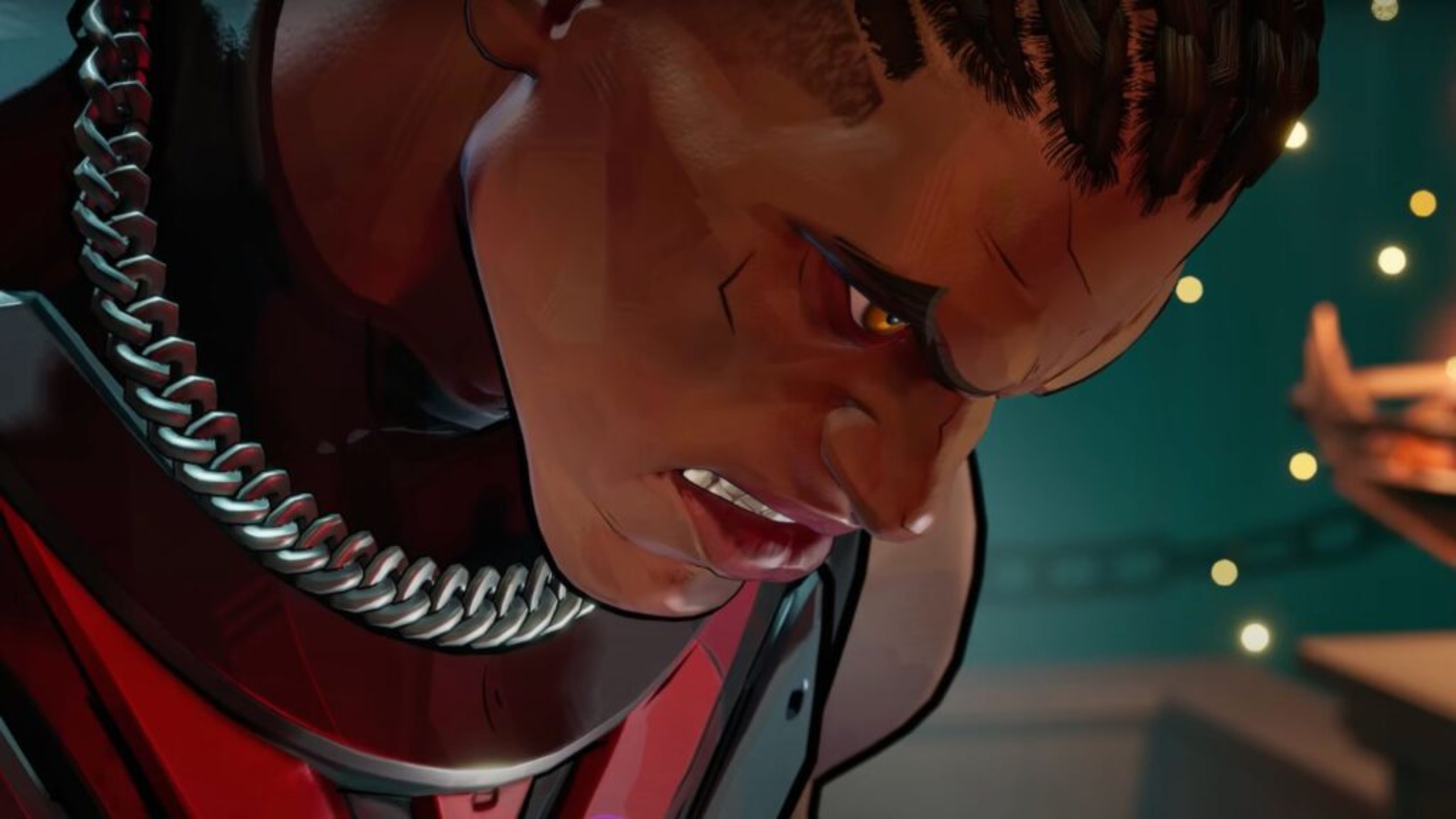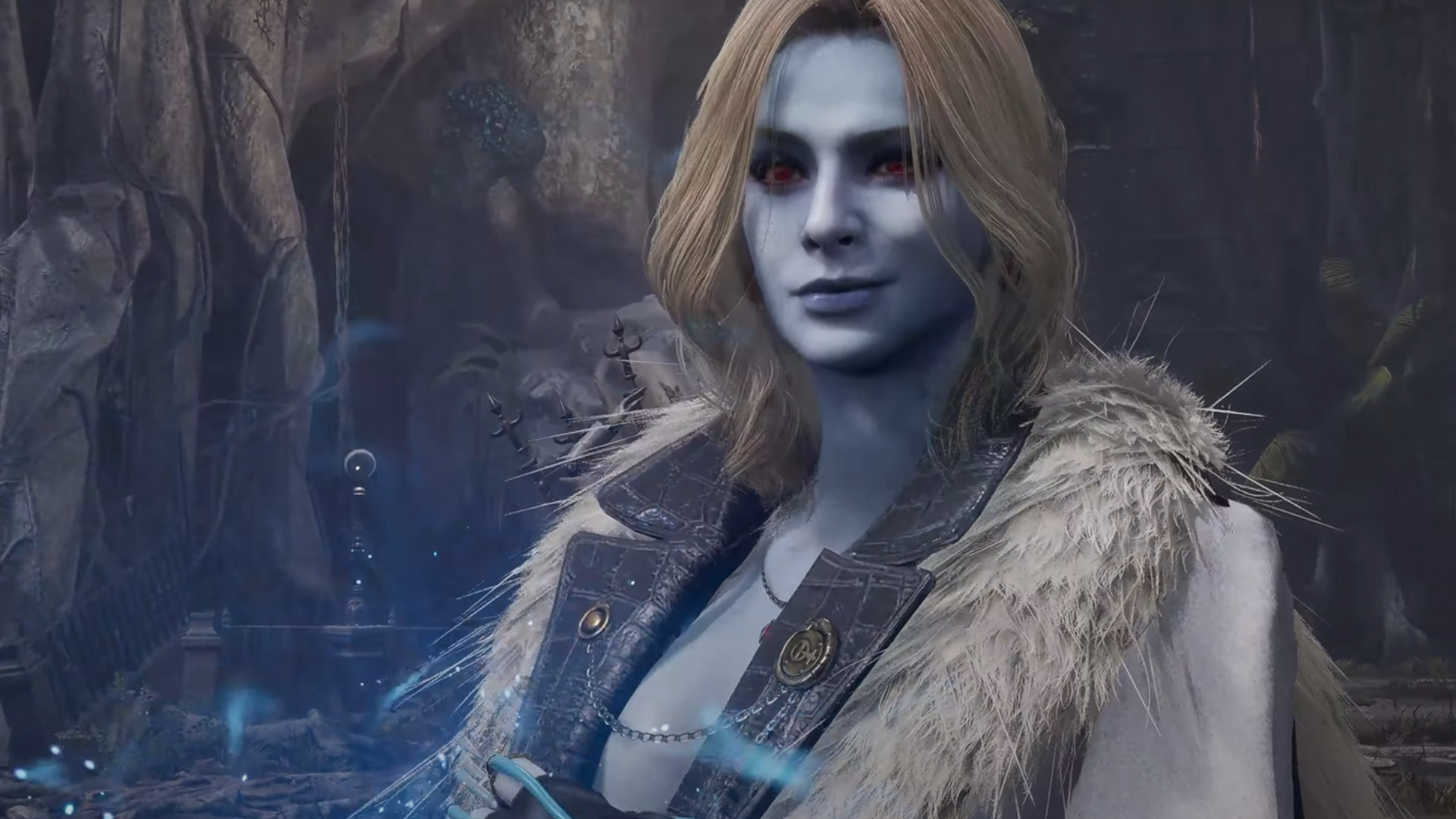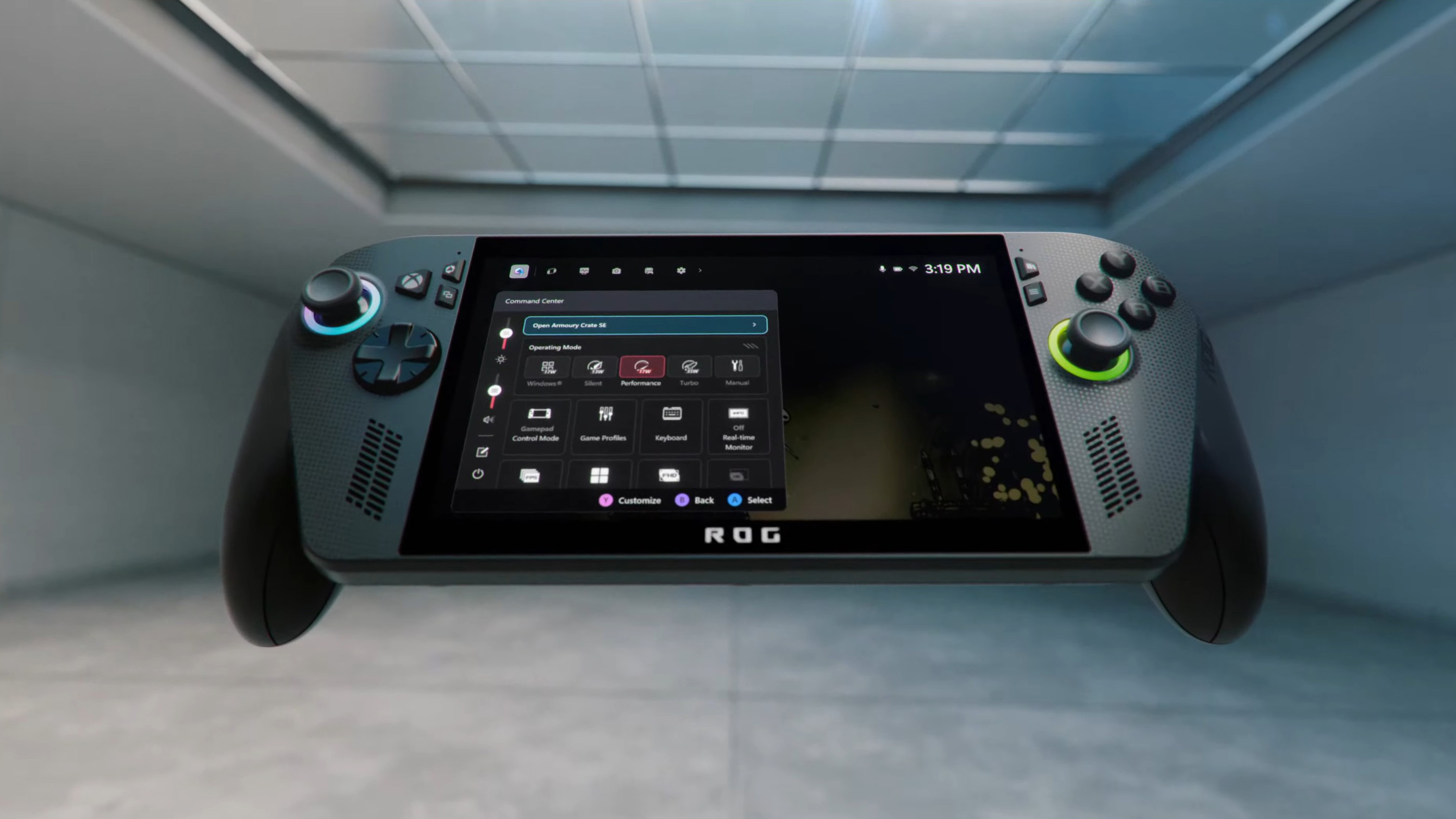
Reviewed on: PlayStation 5 Platform: PlayStation 5, Xbox Series X/S, Switch, PC Publisher: Focus Entertainment Developer: Asobo Studio Release: October 18, 2022 Rating: Mature Going into A Plague Tale: Requiem, developer Asobo Studio’s follow-up to 2019’s A Plague Tale: Innocence, I was prepared for the usual jump in quality and scale that most sequels embrace. I underestimated just how significant that leap would be, though. Calling Requiem a standard sequel is a disservice; Asobo has created a Plague Tale epic. It feels Odyssean in scope and storytelling prowess. Although much of it came together for me by the end of my 20-plus hour journey through medieval France, the game feels strained by its sheer size, especially in its first half. Still, I’m more impressed by Requiem’s boldness and near across-the-board improvements than not. Requiem begins roughly six months after the events of Innocence, and while it is possible to piece together what’s happening if you’re new to the series, I’d really recommend playing Innocence or at least getting caught up on its story before Requiem. Siblings Amicia and Hugo de Rune are looking for a semblance of an ordinary life, despite Hugo’s rat-infested Macula condition. And for some time, the game demonstrates what that normality is like for Amicia, Hugo, and their mother. Still, as you might guess, the Macula plague begins to rear its ugly head once more, forcing Amicia back into protector mode. This shift sees Amicia, Hugo, and returning alchemist Lucas travel south to a mysterious island, searching for answers and a cure. I was excited about this change in setting and all the “new” it brings to the series, but it takes far too long to reach it. At least half of this game is spent escaping your new home to reach a boat that sails to the island. Don’t get me wrong, these 10 to 12 hours are good Plague Tale fun, but they resemble Innocence so much that, at times, it hardly felt like the fresh experience I expected from a sequel. It mostly dragged on, even though I was meeting characters that would become some of my favorites in the game, like battle-hardened but soft-hearted Arnaud or pirate queen Sophia. It didn’t help that I experienced various technical issues like distracting (but not game-breaking) framerate drops, visual bugs, and one complete hard crash. Upon reaching the island, though, my thoughts changed entirely. The story ramps up in pace and excitement, introducing new allies and villains, a cult, intriguing lore, and a new mystery to wrap my head around. Even mechanically, the isle represents a miniature open world to explore that’s more sprawling than any other area in the series. The way the game’s narrative pulls you here and there on this island is good fun, whether you’re solving the mystery of ancient underground ruins or fighting off secretive slavers awaiting the Child of Embers. By the end of my playtime, I felt like I intimately knew its layout. This part of the game impressed me the most because everything is firing on all cylinders. Ingenious puzzles that let you manipulate the rats’ aversion to fire to make them stealthily take down enemies always satisfied me – using a special projectile to extinguish an enemy’s sole flame, allowing the rats to feast on their live body, never grew old. The story’s twists and turns kept me guessing, as did the island’s central mystery. Requiem is visually stunning, too, as Asobo has crafted an almost painterly look for the game with unique and playful color palettes that complement the medieval setting excellently. I recall a moment when it seemed like everything around the de Runes was crashing down atop them, and Requiem represented that visually with a unique, almost grayscale, palette that heightened the enclosing metaphorical darkness. In other moments, I found myself stopping to tinker with photo mode to capture the colorful beauty of blooming flowers on the coast of this scenic island. Requiem really is a treat for the eyes. Elsewhere, Crash Bandicoot-like sequences that see Amicia fleeing from massive hordes of rats toward the screen, or sprinting in the opposite direction to safety, were especially welcomed breaks from the game’s otherwise quieter but stressful stealth moments. These segments speak to the more bombastic nature of Requiem, which at times goes to places I could outright spoil here, and I don’t think you’d believe me anyway. Again, I want to stress how epic Requiem’s scale and size are – it’s bigger than Innocence in every way. Even beyond the story, new additions to Amicia and Hugo’s arsenal, like a one-hit-kill crossbow (don’t rely on it too much, though, because arrows are tough to come by) or Hugo’s ability to control rats and feast on the enemies around you, up the ante of the moment-to-moment gameplay. Still, despite what I enjoyed upon reaching the island, I can’t help but feel that Asobo could have cut a large portion of this game. That’s not to say the sections I want trimmed are bad – they’re good due to A Plague Tale’s quality gameplay and storytelling – but they feel more like unnecessary padding that hinders Requiem’s pacing. I was relieved when Requiem’s second set of credits rolled. Not because I didn’t enjoy playing the game, but because the de Runes’ journey in this game is tense and stressful for much of it. At times, it feels too long and oddly sadistic in its focus on inflicting fakeouts, pain, and suffering on the de Runes. Other times, I admired Asobo’s command of this series, its rat-infested stealth mechanics, and its grandiose storytelling. Fortunately, the latter edges out the former, and Requiem feels like much more than just a follow-up. With this journey behind me, I’m excited about where the series might go from here, but if Asobo plans a break for the franchise, rest assured that Requiem goes out with an impressive bang. Score: 8 About Game Informer's review system Purchase
Reviewed on:
PlayStation 5
Platform:
PlayStation 5, Xbox Series X/S, Switch, PC
Publisher:
Focus Entertainment
Developer:
Asobo Studio
Release:
October 18, 2022
Rating:
Mature
Going into A Plague Tale: Requiem, developer Asobo Studio’s follow-up to 2019’s A Plague Tale: Innocence, I was prepared for the usual jump in quality and scale that most sequels embrace. I underestimated just how significant that leap would be, though. Calling Requiem a standard sequel is a disservice; Asobo has created a Plague Tale epic. It feels Odyssean in scope and storytelling prowess. Although much of it came together for me by the end of my 20-plus hour journey through medieval France, the game feels strained by its sheer size, especially in its first half. Still, I’m more impressed by Requiem’s boldness and near across-the-board improvements than not.
Requiem begins roughly six months after the events of Innocence, and while it is possible to piece together what’s happening if you’re new to the series, I’d really recommend playing Innocence or at least getting caught up on its story before Requiem. Siblings Amicia and Hugo de Rune are looking for a semblance of an ordinary life, despite Hugo’s rat-infested Macula condition. And for some time, the game demonstrates what that normality is like for Amicia, Hugo, and their mother. Still, as you might guess, the Macula plague begins to rear its ugly head once more, forcing Amicia back into protector mode. This shift sees Amicia, Hugo, and returning alchemist Lucas travel south to a mysterious island, searching for answers and a cure.
I was excited about this change in setting and all the “new” it brings to the series, but it takes far too long to reach it. At least half of this game is spent escaping your new home to reach a boat that sails to the island. Don’t get me wrong, these 10 to 12 hours are good Plague Tale fun, but they resemble Innocence so much that, at times, it hardly felt like the fresh experience I expected from a sequel. It mostly dragged on, even though I was meeting characters that would become some of my favorites in the game, like battle-hardened but soft-hearted Arnaud or pirate queen Sophia. It didn’t help that I experienced various technical issues like distracting (but not game-breaking) framerate drops, visual bugs, and one complete hard crash.
Upon reaching the island, though, my thoughts changed entirely. The story ramps up in pace and excitement, introducing new allies and villains, a cult, intriguing lore, and a new mystery to wrap my head around. Even mechanically, the isle represents a miniature open world to explore that’s more sprawling than any other area in the series. The way the game’s narrative pulls you here and there on this island is good fun, whether you’re solving the mystery of ancient underground ruins or fighting off secretive slavers awaiting the Child of Embers. By the end of my playtime, I felt like I intimately knew its layout.
This part of the game impressed me the most because everything is firing on all cylinders. Ingenious puzzles that let you manipulate the rats’ aversion to fire to make them stealthily take down enemies always satisfied me – using a special projectile to extinguish an enemy’s sole flame, allowing the rats to feast on their live body, never grew old. The story’s twists and turns kept me guessing, as did the island’s central mystery.
Requiem is visually stunning, too, as Asobo has crafted an almost painterly look for the game with unique and playful color palettes that complement the medieval setting excellently. I recall a moment when it seemed like everything around the de Runes was crashing down atop them, and Requiem represented that visually with a unique, almost grayscale, palette that heightened the enclosing metaphorical darkness. In other moments, I found myself stopping to tinker with photo mode to capture the colorful beauty of blooming flowers on the coast of this scenic island. Requiem really is a treat for the eyes.
Elsewhere, Crash Bandicoot-like sequences that see Amicia fleeing from massive hordes of rats toward the screen, or sprinting in the opposite direction to safety, were especially welcomed breaks from the game’s otherwise quieter but stressful stealth moments. These segments speak to the more bombastic nature of Requiem, which at times goes to places I could outright spoil here, and I don’t think you’d believe me anyway. Again, I want to stress how epic Requiem’s scale and size are – it’s bigger than Innocence in every way. Even beyond the story, new additions to Amicia and Hugo’s arsenal, like a one-hit-kill crossbow (don’t rely on it too much, though, because arrows are tough to come by) or Hugo’s ability to control rats and feast on the enemies around you, up the ante of the moment-to-moment gameplay.
Still, despite what I enjoyed upon reaching the island, I can’t help but feel that Asobo could have cut a large portion of this game. That’s not to say the sections I want trimmed are bad – they’re good due to A Plague Tale’s quality gameplay and storytelling – but they feel more like unnecessary padding that hinders Requiem’s pacing.
I was relieved when Requiem’s second set of credits rolled. Not because I didn’t enjoy playing the game, but because the de Runes’ journey in this game is tense and stressful for much of it. At times, it feels too long and oddly sadistic in its focus on inflicting fakeouts, pain, and suffering on the de Runes. Other times, I admired Asobo’s command of this series, its rat-infested stealth mechanics, and its grandiose storytelling. Fortunately, the latter edges out the former, and Requiem feels like much more than just a follow-up. With this journey behind me, I’m excited about where the series might go from here, but if Asobo plans a break for the franchise, rest assured that Requiem goes out with an impressive bang.
Score:
8
About Game Informer’s review system



